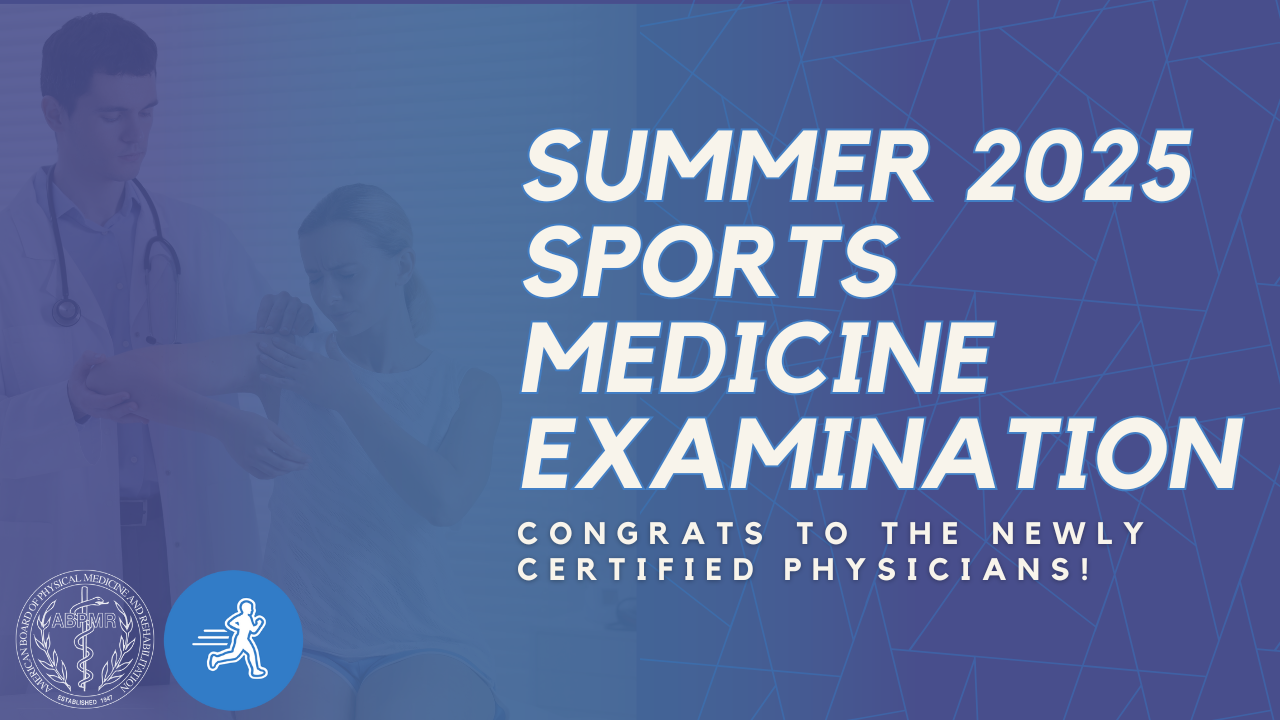CC
PIP Spotlight: Reducing the Rate of Acute Readmissions in an Inpatient Rehabilitation Facility

Brittni Micham MD completed this Practice Improvement Project as a resident working at an inpatient rehabilitation clinic. The goal of Dr. Micham’s PIP was to lower the rate of readmissions to acute care after admission to inpatient rehabilitation.
The PIP Spotlight is a periodic feature on News Center to highlight exemplary Practice Improvement Projects submitted by your fellow diplomates (or residents!) for Maintenance of Certification (MOC) Part IV credit.
Diplomates can use the PIP Spotlight as a tool to model additional PIPs on what you read here, or as a way to connect with other diplomates doing similar work. Keep in mind, anyone working on the same project can claim credit by completing the PIP form (including residency program directors); you simply need to describe your unique role in the project.
Thanks to Dr. Micham for her Practice Improvement Project submission, and congratulations on working ahead on your MOC requirements!

What is the problem you are trying to solve?
Patients admitted to an inpatient rehabilitation (IPR) hospital had unplanned transfers back to acute care within 7 days of arrival at a rate of approximately 6.14%.
What data (objective measurements) do you have that supports this as a problem?
In the calendar year 2017, a 76-bed IPR hospital had a total of 1,367 admissions, 84 of which had unplanned transfers back to acute care within 7 days of arrival (6.14%). We designed our intervention based on analysis of signs, symptoms, and reasons for readmissions.
Among the 84 patients who transferred back to acute within 7 days of IPR admission, 60.7% were male and the average age was 67.4 years. Of the total, 39 were transferred within 2 days of arrival (46.4%). The majority of IPR admission diagnoses among these patients were stroke (57.1%), spinal cord injury (11.9%) and hip or pelvic fracture (5.9%).
On IPR admission, 70.2% carried a diagnosis of dysphagia and 20.2% were nothing by mouth on tube feeds. In the 48 hours preceding arrival at IPR, 34.5% had documented leukocytosis above WBC 12 and 32.1% were tachycardic with heart rate greater than 100bpm, but only 1.2% had fever above 38C.
The top three reasons for transfer back to acute were acute respiratory distress (31.0%), new or evolving stroke (15.5%) and gastrointestinal bleed (11.9%). The category of respiratory distress included aspiration pneumonia, which accounted for 10.7% of total transferred patients. The most common diagnoses made on acute after transfer off IPR were pneumonia (20.2%), DVT (19.0%), sepsis (19.0%), UTI (14.3%), pulmonary embolism (11.9%) and wound complication (11.9%).
What is your opportunity statement? State the goal you hope to achieve.
The goal was to reduce the rate of acute readmissions by 5%.
What is the underlying cause of the performance/quality problem?
Until the project, no one had identified the trends among patients who are transferred back to acute care within the first week of inpatient rehabilitation, meaning that risk-associated diagnoses, signs, and symptoms were not addressed before admission to IPR.

What change(s) did you implement?
Trends were presented to physicians and staff to increase awareness of risk-associated diagnoses and potentially concerning signs and symptoms. Education was also given on the prevention of aspiration pneumonia and GI bleeds in inpatient rehabilitation patients.
A pre-admission checklist was created to screen for fever, tachycardia, leukocytosis, increasing oxygen requirement, severe anemia, dysphagia, and any recent treatment by a rapid response or condition team.
Case managers coordinating admissions to IPR were instructed on the use of the checklist and began notifying physicians if a potential admission flagged any items on the checklist.

Did you achieve your goal or target from your opportunity statement? What data do you have to support your conclusion?
Yes. In the six months following intervention, the same IPR hospital had 495 admissions, 23 of which transferred back to acute care within seven days of arrival (4.65%). This represents a decrease in the averaged rate of readmissions by 24%.

Will you continue with the changes you have implemented?
The preadmission screening checklist will continue to be used at this inpatient rehabilitation hospital. We are also considering implementing it at other rehabilitation hospitals.



